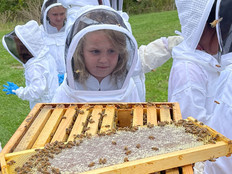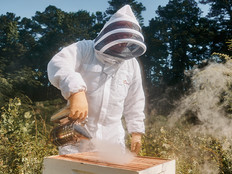Interactive Whiteboards Enliven Storytelling
Research has shown that interactive whiteboards make the teaching and learning process far more engaging and often lead to better retention of the material presented. With these and other classroom technologies, students can become their own content publishers.
LESSON DESCRIPTION: This lesson helps students transform an ordinary picture into an animated I SPY–like book using an interactive whiteboard, a digital camera, a digital voice recorder, classroom computers and Microsoft PowerPoint.
Begin by asking students to select the items they wish to include in their picture. They can either bring small toys from home or choose classroom objects. Have students set up scenes with the objects they have selected and then use the camera to photograph their work. These pictures will serve as the basis for the stories students will write and then transform into interactive books complete with animation and audio. Their stories must mention eight items featured in the picture and follow the basic mechanics of good storytelling. Encourage students to pick one object that will serve as the story's "main character," introduce a problem that will propel the action and come up with a plot resolution that will leave readers feeling satisfied at the end, as any good story will do.
When all stories are approved, instruct students to pair off and read each other's story into the voice recorder. Help students save their pictures and voice recordings on the classroom computers and then assemble their books using Microsoft PowerPoint. The slides students create should incorporate both their photos and their voice recordings.
Next, have students display their stories on the interactive whiteboard and draw circles around each item mentioned in the stories using PowerPoint's drawing tools. Students may have to listen to the narrative multiple times to verify that they have circled all items that appear in the story. Once all items are circled, have students animate the circles using the Custom Animation tab in PowerPoint so the circles "fly" into view as they are mentioned in the story narrative.
Conclude the lesson by showing each PowerPoint story to the class using the interactive whiteboard and challenging students to locate all of the items that are mentioned in each one.
SUBJECT AREA: This lesson teaches writing and technology skills and can be adapted for any content area or grade level.
CURRICULUM STANDARDS: This lesson addresses oral fluency, story writing, sequencing and technology use requirements outlined in the Texas Essential Knowledge and Skills standards established by the Texas Education Agency. It also fulfills several National Educational Technology Standards for Students developed by the International Society for Technology in Education.
RESOURCES:
- Educational Uses of Digital Storytelling (University of Houston): digitalstorytelling.coe.uh.edu
- I SPY books: scholastic.com/ispy/books
- PowerPoint help and how-to: office.microsoft.com/en-us/powerpoint-help/?CTT=97
GRADING RUBRIC: Students should be graded on their ability to read aloud with accuracy, expression and appropriate phrasing; their development of a story with correct sequencing, grammar and punctuation; and their use of the technologies needed to complete the assignment.
Teaching Tips
✔ Have students pick one object or item in their picture to serve as their book's main character. This makes it easier for them to build a story.
✔ Teach students the basics of PowerPoint before beginning this lesson.
✔ Instead of using a mouse with the interactive whiteboard, have students move objects in their PowerPoint presentations with their hands for greater control over their story elements.







